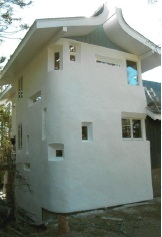Does a High Performance Home Have to Look Weird?

 Yesterday, I heard a law student tell a story about some advice she gave to her friend about a recent break up. Her friend was having trouble letting go, and instead of saying something simple like, “you need to move on,” she recommended that her friend “mitigate the damages!” WHAT!?, her friend asked, “what does that even mean?”
Yesterday, I heard a law student tell a story about some advice she gave to her friend about a recent break up. Her friend was having trouble letting go, and instead of saying something simple like, “you need to move on,” she recommended that her friend “mitigate the damages!” WHAT!?, her friend asked, “what does that even mean?”
Yesterday, I heard a law student tell a story about some advice she gave to her friend about a recent break up. Her friend was having trouble letting go, and instead of saying something simple like, “you need to move on,” she recommended that her friend “mitigate the damages!” WHAT!?, her friend asked, “what does that even mean?”
Using jargon is common with most professionals who work in a field that is filled with technical language that only they use, including those of us in the field of building science (architects, raters, builders, etc.). Misinterpreting that jargon, and the meanings behind it, is common to those outside the field.
A common misinterpretation about high performance homes is that they have to look odd, out-of-place, or downright bizarre. But is it really true? Is the choice really between fitting in or having a home that’s comfortable, durable, healthful, and efficient?
As you may have read in a previous article, I’m designing a home for my uncle John and his fiancee, Ann. They called me because they want a home with low energy bills, and are interested in ‘being green.’ More than that, though, they want a comfortable house that serves thei r needs, and they want it to be beautiful. They plan on retiring in this home.
r needs, and they want it to be beautiful. They plan on retiring in this home.
So, what does the homeowner want to know about energy efficient home design and/or retrofits? Well, Uncle John asked, “Can these modern, energy efficient-focused, design techniques be applied to traditional architectural styles?”, and, “can a house be too tight?” The answer is, “YES, Absolutely” to the first question and “No, definitely not” to the second.
In another earlier article about the Silent Heroes of Energy Efficient Design, I talked about ‘techniques’ that work behind the scenes to help increase efficiency to ultimately lower energy bills. The emphasis here is on behind the scenes. High performance materials, such as certain types of insulation and windows, are specified in the construction drawings and then installed by the contractor in place of inferior ones.
Energy modeling and HVAC load calculations are another important part of the process to ensure that the house will perform well and that the heating and cooling equipment runs efficiently and is not bigger than it needs to be. Inspections and performance testing by a third party, certified home energy rater are another crucial part of the process.
 The aesthetics of a home will not suffer from implementing any of these techniques. In fact, most of the time even the savviest of building science professionals are unable to identify an energy efficient home just by looking at it from the street.
The aesthetics of a home will not suffer from implementing any of these techniques. In fact, most of the time even the savviest of building science professionals are unable to identify an energy efficient home just by looking at it from the street.
The house at the top of this page is a bit odd-looking and may or may not be a high performance home. The other houses on this page don’t look weird and are definitely high performance homes.
Designing or upgrading to a tight, energy efficient home is nothing more than “good design.” So, whether your new or existing home is contemporary, traditional, craftsman or colonial, don’t be afraid to ask for energy efficiency. It doesn’t have to clash with your aesthetic sensibilities. Plus, there are plenty of rebate and tax incentive programs, and long term energy savings that will make you glad you did!
This Post Has 2 Comments
Comments are closed.

Check out the Zenergy House
Check out the Zenergy House in Los Angeles…. http://www.ZenergyHouse.com/
Ron, I’ve heard of the
Ron, I’ve heard of the Zenergy House but hadn’t checked it out till now. Thanks for posting the link. It’s a great project, and we should be doing this everywhere. Do you have any rebates tied to the Home Performance with ENERGY STAR program in LA?